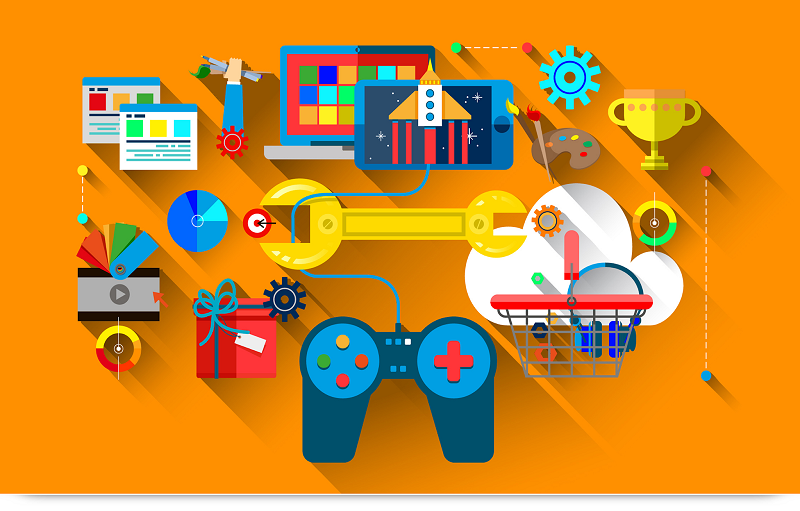Game development is a broad term for the entire process of going from idea to finished, playable product. This sounds daunting. There’s a lot of information in a single game – how do you figure out where to start?
Games have several parts, but they can be broken down into a few different categories:
- Design – the game design process includes everything from the initial concept for the overall game to the detailed outline for how it’s played, as well as the individual elements needed for each part.
- Art – these are the visuals you see on-screen, as well as the promotional material and packaging.
- Writing – dialogue, item descriptions and names, locations, story, and synopses are all essential to most games.
- Programming – how the game works, including which engine it runs on, which operating systems it can be played on, how it boots up and closes, how it loads, and the actions taken in the game.
Game development professionals can assist in all of the above. These may be in the form of build help – coding, programming, mechanical development – or in design and marketing help. Working with a professional game development service can help you get things done faster.
The Stages of Game Development
Though sources differ on the actual order and structure of the process, most professionals agree that there are six unique stages to the game development process.
Concept
During the concept stage, your game is little more than an idea. You understand that you want to make a game but may not know the story’s details, art style, or structure. This is the planning stage – you’re organizing your thoughts so that you can begin actual development.
At this phase of the process, you’ll want to make a rough outline of your game and decide on a few key pieces: your main plot, your key characters, and the win/lose scenarios. You may also make a list of engines to explore working with and skills that you know you have versus the ones you think you may need.

Research
This is when you’ll want to dive deeper into the ideas that you had before. Look for similar games already published or in production; play some of them if you can for inspiration.
You’ll also want to get the essentials of production sorted out. Look for and hire additional team members who can do what you can’t, such as writers, artists, and programmers. Explore the benefits and drawbacks of different game development services and tools, and choose the ones that most benefit your process.
In this stage, you’ll finalize the initial timetable you made in the concept stage and make a detailed outline of the game for your team to work through.
Building
This is the hardest part. Now you have to build the entire game. Remember to break it down into smaller, more manageable sections and check in with your team regularly. Also, keep backups of everything you make. You don’t want to lose months of work to a computer failure.
Your game may change drastically during this stage. You may discover that certain concepts are too difficult to put together or that the story you had simply isn’t working the way you want it to. If this happens, don’t be afraid to change and adapt your plans.
Testing
The testing phase can often be more frustrating than the actual building of the game. This is the point in the process where you bring in beta testers; you want people who will explore every inch of your game to make sure that everything is working correctly. You’ll also want to have testers actively try to break the game; this lets you know about any game development issues that may have slipped through the cracks.
Have your testers send your team bug reports and general reviews about what they liked and didn’t like. Fix the bugs and any sections that don’t work properly for whatever reason; if you can’t fix it, you may need to go back to the building phase to remake it. If you do, remember to have it tested again, just as rigorously, to ensure the best gaming experience prior to launch.
Refining
In this second-to-last phase, you’ll put the finishing touches on the game. Proofread dialogue and story elements, update the artwork to final, high-definition images, and tweak the programming to make it as smooth as possible.
This stage is where you’ll want to start sending the game out to those receiving advanced copies, such as influencers and financial supporters.
Launch
And just like that, you’re done! Launch your game with the appropriate amount of marketing flair. This stage is more about making sure your game gets in front of as many people as possible as quickly as possible than it is about simply celebrating.
Game development services can sometimes offer help with this; some companies offer marketing plans for developers that handle the entire launch process.
Conclusion
Game design doesn’t have to be scary. Though it may take a long time to do, it can be easily broken down into manageable stages, and as long as you stick to your plan and take your time, you’ll end up with a game you can be proud of.